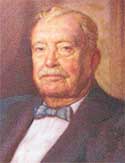 |
Home > About CIR
About CIR
The Council on Industrial Relations (CIR) is one of labor arbitration history's success stories. Founded in 1920, the CIR is cosponsored by the International Brotherhood of Electrical Workers (IBEW) and the National Electrical Contractors Association (NECA) as a means to settle peacefully labor disputes within the electrical industry. The process has worked well with over 8,000 decisions issued since inception making the CIR process a shining example of successful labor-management relations. Under this system, with a "CIR clause" in the collective bargaining agreement, all disputes between labor and management which have come to impasse must be brought to CIR for adjudication. The decision issued by CIR is legal and binding upon both parties, thus replacing the need for costly strikes. The CIR panel is made up of twelve members, six representatives from the IBEW and six representatives from NECA, chosen for their ability to render fair and equable decisions based upon the facts. The Council is unique in that panel members are from within the industry and are made up of representatives from both labor and management. Because of this, panel members fully understand the impact that their decisions will have upon the industry as well as to the parties involved. All decisions rendered by CIR are unanimous as all panel members must agree before a decision becomes official. When the members of the Council are in session, they do not represent either NECA or IBEW, but instead must remain objective and represent the electrical contracting industry. The CIR meets four times a year to hear grievances, interpret existing agreements, and to arbitrate contract negotiations. In each case, the parties must have tried to settle their differences at home but have come to impasse. The Council on Industrial Relations had its beginning in the era immediately following World War I when labor strife was rampant. In 1916, a small group of electrical contractors called the Conference Club met regularly. Although they were, in part, a social club, members carried on serious discussions and presented various papers on matters of concern to the rapidly expanding electrical industry. It was during these meetings that a contractor named L.K. Comstock proposed that a committee be formed with the IBEW for the purpose of drafting a "National Labor Agreement."
A joint committee of IBEW representatives, led by International Secretary Charles Ford, and contractors, led by Comstock, met in March 1919. They agreed that a medium was needed for frank discussions and so they issued a joint declaration of principles. The declaration was accepted by the National Association of Electrical Contractors and Dealers (name later changed to the National Electrical Contractors Association) at their July 1919 convention. The IBEW approved the "Declaration of Principles" later that same year in September at the IBEW New Orleans Convention. A committee comprised of five members of the IBEW and five from the Contractors were appointed to work out a plan for putting these principles into action. The committee adopted a resolution to set up the Council on Industrial Relations, January 26, 1920. For their cooperation and hard work, L. K. Comstock, sometimes called “the Dean of the Electrical Contracting Industry,” and Charles P. Ford, International Secretary of the IBEW, are given credit for creating the CIR. Mr. Comstock said, “There were those who said the proposal had no merit. The Council taught us how to create and maintain friendly relations, labor and management, and to eliminate the strike. This elimination has been productive of savings of many millions of dollars, which have accrued to employer, employee and the public. It has set a new and original pattern of labor relations and has proved its efficacy and usefulness to all parties concerned.” While only 45 cases were heard in the first 25 years, as the credibility and influence of the CIR continued to grow, 1,849 decisions were issued during the next 25 years until now when an average of 130 decisions are issued each year by the panel. However, the number of decisions issued by CIR is only part of the important role this panel plays in creating stability within the electrical industry. Only a portion of labor disputes reach CIR as there is pressure on both parties to settle their disputes at home before they come to Council. Many thousands of cases have been settled amicably by the employers and the local unions bargaining in good faith, knowing that as a last resort this “supreme court of the electrical contracting industry” is open to them. In addition, CIR decisions rendered through the years have set a pattern for local contractors and unions to follow in solving their differences, making many appeals to the Council unnecessary. The CIR recognizes the fundamental rights of the employer and the employee and their mutual obligation to each other, the industry and the general public. The panel follows the precepts that matters such as wages, union recognition, peaceful solution of industrial disputes, sacredness of negotiated contracts, worker cooperation with management, and the obligation of both parties to strive for efficiency in production are vital to the industry. Obviously, while the panel tries to be fair and just, decisions sometimes do not please one or both of the disputing parties. The record shows, however, that while complaints have been few, they are almost exactly divided between management and labor, which indicates that a fair, objective job is being done. The story of the Council on Industrial Relations is a story of service to the electrical industry. Today, the CIR continues to prove that employers and employees can work together in harmony and peace for the greater good of all. See the Original Guiding Principles |
See the Original Guiding Principles Through the years there have been many significant comments passed on the exemplary relationship existing between NECA and the IBEW, pertaining to the merits and accomplishments of our Council on Industrial Relations. Here are a few selected at random: L.K Comstock, NECA
|



